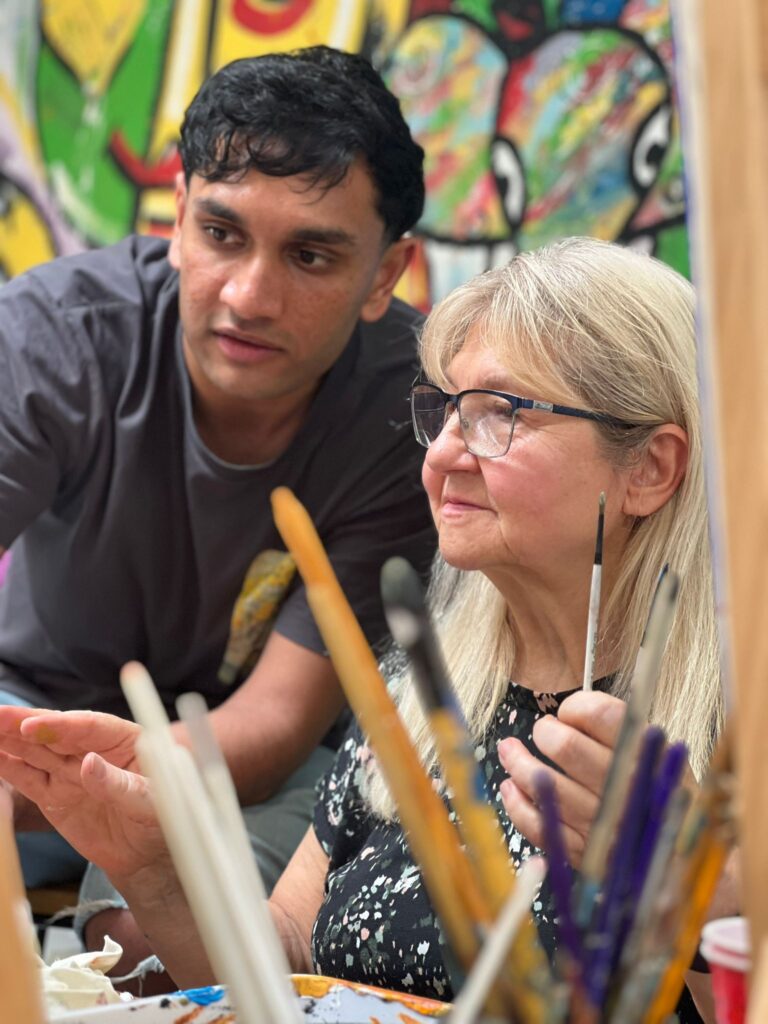Innovative Techniques for Teaching Art to Beginners

Teaching art to beginners can be an immensely rewarding experience. Watching students progress from hesitant strokes to confident masterpieces is a joy that every art teacher cherishes. However, engaging new students and making the learning process enjoyable and accessible can be challenging. Here are some innovative techniques to help you inspire and guide your beginner art students.
### 1. **Start with Simple Projects**
Beginners can often feel overwhelmed by the complexity of art. Start with simple projects that focus on basic skills. For example, drawing basic shapes, practicing colour mixing, or creating simple landscapes can help build confidence. These foundational exercises are crucial in developing the skills needed for more complex projects later on.
### 2. **Incorporate Play into Learning**
Art is inherently playful, and incorporating games and playful activities can make learning more enjoyable. Try activities like “draw what you hear,” where students listen to a piece of music and draw what they imagine, or “blind contour drawing,” where they draw an object without looking at the paper. These exercises can help students loosen up and enjoy the creative process.
### 3. **Use Technology and Digital Tools**
In today’s digital age, integrating technology into your art classes can enhance the learning experience. Use apps and software that allow students to experiment with different techniques and mediums. Digital drawing tablets, online tutorials, and art creation apps can provide new ways for students to express themselves and explore their creativity.
### 4. **Encourage Personal Expression**
Art is a deeply personal form of expression. Encourage your students to bring their own experiences, interests, and emotions into their work. This can be achieved through open-ended projects where students choose their subjects and mediums. By allowing personal expression, you help students find their unique artistic voice.
### 5. **Create a Supportive Environment**
A supportive and positive classroom environment is essential for beginners. Provide constructive feedback and celebrate their progress, no matter how small. Create a space where students feel safe to experiment and make mistakes. This will help them build confidence and enjoy the learning process.
### 6. **Incorporate Cross-Disciplinary Approaches**
Art can intersect with many other subjects, such as science, history, and literature. Incorporate cross-disciplinary approaches to make your lessons more engaging. For instance, you could explore the art of different historical periods, study the science of colour and light, or create projects inspired by literary works.
### 7. **Utilize Group Projects and Collaboration**
Group projects and collaborative activities can be very effective in teaching art. Working with peers allows students to learn from each other, share ideas, and develop teamwork skills. Projects like mural painting, collaborative sculptures, or group exhibitions can foster a sense of community and collective achievement.
### Conclusion
Teaching art to beginners is not just about imparting technical skills; it’s about inspiring a love for creativity and self-expression. By using these innovative techniques, you can create a dynamic and supportive learning environment that encourages your students to explore, experiment, and enjoy the wonderful world of art. As an art teacher, your role is to guide them on this journey, helping them unlock their potential and discover the joy of creating.

